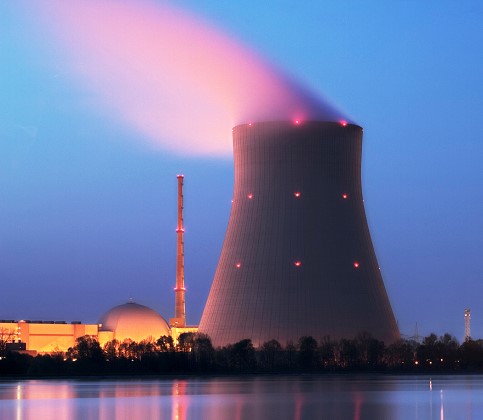The Blossoming of Nuclear Power
 |
| Nuclear power plants produce zero carbon into the environment and produce huge amounts of energy |
Last May we published an article titled Are Nuclear power plants the way forward? which suggested that electric cars that use power from Nuclear power plants is the best way for the world to reduce its dependence on pollution emitting fossil fuels. This follow-up article talks about the momentum that is building for new Nuclear plants. And so the question begs to be asked, if electric cars are indeed our future, should race cars begin to derive some of their propulsion from electric motors?
Robin Goldwyn of Barron's Magazine writes, The US stands at a pivotal moment for the advancement of Nuclear energy. President-elect Barack Obama has set a goal to reduce carbon emissions in the U.S. by 80% by 2050, using $150 billion over 10 years to create a "clean-energy" future. Nuclear plants are the biggest producers of energy that doesn't emit any greenhouse gases.
Plans are afoot to build 26 nuclear plants. No new plants have been built in the U.S. for 30 years.
"Nuclear power is in a renaissance," says Tom Neff, a physicist and research affiliate at MIT's Center for International Studies. In fact, 17 applicants are seeking government approval to build 26 nuclear plants, meeting a Dec. 31 deadline for federal tax credits and potentially ending a 30-year hiatus in the construction of new U.S. nuke facilities.
That adds up to a big investment opportunity. Even if it takes 10 years for the first of the new crop to be built — a distinct possibility — some of the power companies operating the 104 existing nuclear plants look tempting right now. Their stocks are cheap and their competitive advantages are many. They have lower costs than rivals such as coal-fired facilities, putting them in a better position to ride out the recession. They'll come out much better than the competition if a carbon tax is imposed. And they're better prepared for the long haul in the new era of nuclear power.
Nuclear energy has been gaining ground as safety fears have eased. Exelon and other operators have addressed the problem of nuclear waste disposal with "dry-cask storage" — high-tech sealed containers that they keep on their sites. Due to innovations like that, many of the safety concerns that arose after accidents at Three Mile Island in Pennsylvania in 1979 and Chernobyl in Ukraine (then part of the Soviet Union) in 1986 have eased.
"It's safer to work in a nuclear plant than it is in real estate," says Patrick Moore, a scientist and founding member of Greenpeace who began supporting nuclear energy several years ago. He cites data from the U.S. Bureau of Labor Statistics, and notes that a Columbia University study published in 2004, which followed 54,000 nuclear plant workers for 15 years, found that they had fewer cancers, less disease and lived longer than the average person.
"If you honestly believe that greenhouse gas is the seminal issue of the day, as world population and economic growth continue to expand, so will the need for electric capacity," says Sheila Slocum Hollis, a partner at the Washington law firm of Duane Morris who specializes in energy law. "Whether to power electric vehicles or for general manufacturing needs, ultimately people are looking toward nuclear as the big power source."
Yes, concerns have cropped up about the costs of building new plants, with some estimates putting them at five times the cost of building natural gas plants. Yet the Nuclear Energy Institute, the industry trade group, maintains that the capital costs become competitive due to nuclear plants' lower operating costs versus gas producers' costs. What's more, cost comparisons with other types of energy producers don't reflect any benefit that nuclear operators might see from carbon credits.
"I have seen a sea change in public acceptance of nuclear power," says Slocum Hollis. "People have seen it for 35 years now, and it's working," she says. And perhaps most important, "it has a lot of jobs associated with it in many communities."
This full article by Robin Goldwyn Blumenthal of Barron's Magazine can be found here.
So if plug-in electric cars are our future, it may be time for all racing series to examine how race cars carry battery powered electric motors in addition to a regular internal combustion engine so that there is some connection between race cars and the cars people drive on the road.
No recharging of the batteries during a race would be possible and the driver would have to manage his battery consumption as well as fuel consumption as part of his strategy to win the race.
